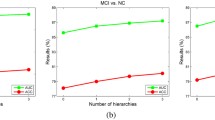Abstract
Single cell RNA sequencing (scRNA-seq) technology is capable of generating a large amount of data. These big data would be easier to handle, if they could be reliably reduced. In order to do so, many methods have been proposed. The dimensionality reduction (DR) and the feature Selection (FS) techniques proved to be favorable from the research field. Here the techniques mentioned above are reevaluated and seven different Machine Learning (ML) methods are identified aiming to present a comparison of the selected methods according to the model performance, metrics, and speed. Alzheimer’s disease damages the brain and is the most frequent neurodegenerative illness among older people. Alzheimer’s disease causes a gradual loss of cognition and memory. Genetic factors play a significant influence in the start of the disease, as certain genes might exacerbate suffering while not directly causing the disease. In recent research, dimensionality reduction and feature selection have been used in Alzheimer’s disease in order to improve the classification performance. When the number of observations is much lower than the dimensionality of the features, unsatisfactory classification performance results. The “small sample size” problem refers to the problem of poor classifier performance. Using manifold learning approaches, the dimensionality of the feature vector can be decreased. As a result, managing shape data in a low-dimensional space becomes more tractable. The most useful information could be kept utilizing dimensionality techniques, offering enhanced performance. The applied information gain approach to optimize feature selection in machine learning reveals that with optimized feature selection, classification accuracy improves, indicating that the information gain method can be used to choose more sensitive anatomical regions in Alzheimer’s disease diagnosis.
Similar content being viewed by others
References
Andrade C (2019) The P value and statistical significance: misunderstandings, explanations, challenges, and alternatives. Indian J Psychol Med 41(3):210–215
Bommert A, Sun X, Bischl B, Rahnenführer J, Lang M (2020) Benchmark for filter methods for feature selection in high-dimensional classification data. Comput Stat Data Anal 143:106839
Chen X, Teichmann SA, Meyer KB (2018) From tissues to cell types and back: single-cell gene expression analysis of tissue architecture. Ann Rev Biomed Data Sci 1:29–51
Do VH, Canzar S (2021) A generalization of t-SNE and UMAP to single-cell multimodal omics. Genome Biology 22(1):1–9
Gopika N, Kowshalaya AM (2018) Correlation based feature selection algorithm for machine learning. In: In 2018 3rd International Conference on Communication and Electronics Systems (ICCES). IEEE, pp 692–695
Han H, Zhang T, Benton ML, Li C, Wang J, Li J (2022). Explainable t-SNE for single-cell RNA-seq data analysis. bioRxiv
Hua J, Tembe WD, Dougherty ER (2009) Performance of feature-selection methods in the classification of high-dimension data. Pattern Recogn 42(3):409–424
Jolliffe IT, Cadima J (2016) Principal component analysis: a review and recent developments. Philos Trans R Soc A Math Phys Eng Sci 374(2065):20150202
Li H, Courtois ET, Sengupta D, Tan Y, Chen KH, Goh JJL et al (2017) Reference component analysis of single-cell transcriptomes elucidates cellular heterogeneity in human colorectal tumors. Nat Genet 49(5):708–718
López M, Ramírez J, Górriz JM, Álvarez I, Salas-Gonzalez D, Segovia F et al (2011) Principal component analysis-based techniques and supervised classification schemes for the early detection of Alzheimer’s disease. Neurocomputing 74(8):1260–1271
Maier A, Rodríguez-Salas D (2017) Fast and robust selection of highly-correlated features in regression problems. In: In 2017 Fifteenth IAPR International Conference on Machine Vision Applications (MVA). IEEE, pp 482–485
McDavid A, Finak G, Gottardo R (2016) Reply to the contribution of cell cycle to heterogeneity in single-cell RNA-seq data. Nat Biotechnol 34(6):593–595
Nascimento M, e Silva FF, Sáfadi T, Nascimento ACC, Ferreira TEM, Barroso LMA, Ferreira Azevedo C, Guimarães SEF, Serão NVL (2017) Independent component analysis (ICA) based-clustering of temporal RNA-seq data. PLoS One 12:e0181195
Park H, Yang JJ, Seo J, Lee JM (2013) Dimensionality reduced cortical features and their use in predicting longitudinal changes in Alzheimer’s disease. Neurosci Lett 550:17–22
Patel AP, Tirosh I, Trombetta JJ, Shalek AK, Gillespie SM, Wakimoto H et al (2014) Single-cell RNA-seq highlights intratumoral heterogeneity in primary glioblastoma. Science 344(6190):1396–1401
Picelli S, Faridani OR, Björklund ÅK, Winberg G, Sagasser S, Sandberg R (2014) Full-length RNA-seq from single cells using Smart-seq2. Nat Protoc 9(1):171–181
Reif M, Shafait F (2014) Efficient feature size reduction via predictive forward selection. Pattern Recogn 47(4):1664–1673
Rozenblatt-Rosen O, Stubbington MJ, Regev A, Teichmann SA (2017) The Human Cell Atlas: from vision to reality. Nature 550(7677):451–453
Stegle O, Teichmann SA, Marioni JC (2015) Computational and analytical challenges in single-cell transcriptomics. Nat Rev Genet 16(3):133–145
Tenenbaum JB, Silva VD, Langford JC (2000) A global geometric framework for nonlinear dimensionality reduction. Science 290(5500):2319–2323
Townes FW, Hicks SC, Aryee MJ, Irizarry RA (2019) Feature selection and dimension reduction for single-cell RNA-Seq based on a multinomial model. Genome Biol 20(1):1–16
Vasighizaker A, Danda S, Rueda L (2022) Discovering cell types using manifold learning and enhanced visualization of single-cell RNA-Seq data. Sci Rep 12(1):1–16
Zhou K, He W, Xu Y, Xiong G, Cai J (2018) Feature selection and transfer learning for Alzheimer’s disease clinical diagnosis. Appl Sci 8(8):1372
Ziegenhain C, Vieth B, Parekh S, Reinius B, Guillaumet-Adkins A, Smets M et al (2017) Comparative analysis of single-cell RNA sequencing methods. Mol Cell 65(4):631–643
Author information
Authors and Affiliations
Editor information
Editors and Affiliations
Rights and permissions
Copyright information
© 2023 Springer Nature Switzerland AG
About this entry
Cite this entry
Paplomatas, P., Vrahatis, A.G. (2023). Early Alzheimer’s Prediction Using Dimensionality Reduction Techniques. In: Vlamos, P., Kotsireas, I.S., Tarnanas, I. (eds) Handbook of Computational Neurodegeneration. Springer, Cham. https://doi.org/10.1007/978-3-319-75479-6_65-1
Download citation
DOI: https://doi.org/10.1007/978-3-319-75479-6_65-1
Received:
Accepted:
Published:
Publisher Name: Springer, Cham
Print ISBN: 978-3-319-75479-6
Online ISBN: 978-3-319-75479-6
eBook Packages: Springer Reference Biomedicine and Life SciencesReference Module Biomedical and Life Sciences




